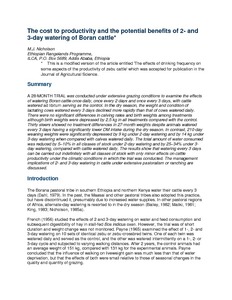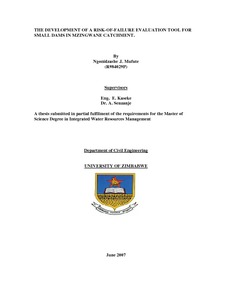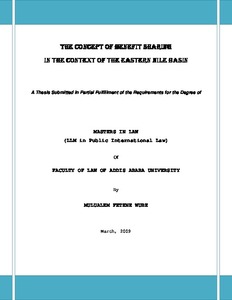The ‘happy strategies’ game: Matching land and water interventions with community and landscape needs
Technical assistance for irrigation management for diversified crops in the Philippines: A proposal to the Asian Development Bank
The challenge of urban flood control: the case of Accra?s Korle Lagoon
The 2004 follow-up survey report to the 2003 baseline survey of three pilot WUAs in the Ferghana Valley
IWRM-Ferghana Project Handbook
The cost to productivity and the potential benefits of 2- and 3-day watering of Boran cattle
A trial conducted to examine the effects of watering Boran cattle once daily, once every two days and once every three days on birth and weaning weights, post-weaning growth and cow performance under extensive grazing conditions.
The development of key national policies with respect to rainwater management in Ethiopia: A review
Several national economic and sectoral policies and strategies were developed, adopted
and being implemented over the last couple of decades in Ethiopia. These policies and
strategies provide frameworks and guides for economic management in a wide range of
aspects. There are policies that support and lay a good ground for the development and
implementation of RWM interventions. These policies are general like the ones that affect
the agricultural sectoral development and specific ones that are important for water sector,
The energy-irrigation nexus
Electricity subsidies for farmers are an expensive legacy of past development policies. The result is overuse of both energy and water in groundwater-irrigated agriculture?threatening the financial viability of the power sector and the future of the groundwater resource itself, along with the livelihoods of the millions who depend on it. The most popular solution is the metered tariff, promoted by international donors and many of India?s state governments.
The Gal Oya farmer organisation programme: A learning process?
The concept of benefit sharing in the context of the eastern Nile Basin
This study attempted to predict the likely impacts of a dam reservoir and flow regulation on riparian plant composition and diversity. The study was conducted around the Koga dam in the upper part of the Blue Nile basin in the northwestern part of Ethiopia. Floristic composition and diversity in the riverine and adjacent sites of the river was studied. The presence of plant species that would be affected by the storage of the Koga River water and the modification of the downstream river flow regime were assessed.






